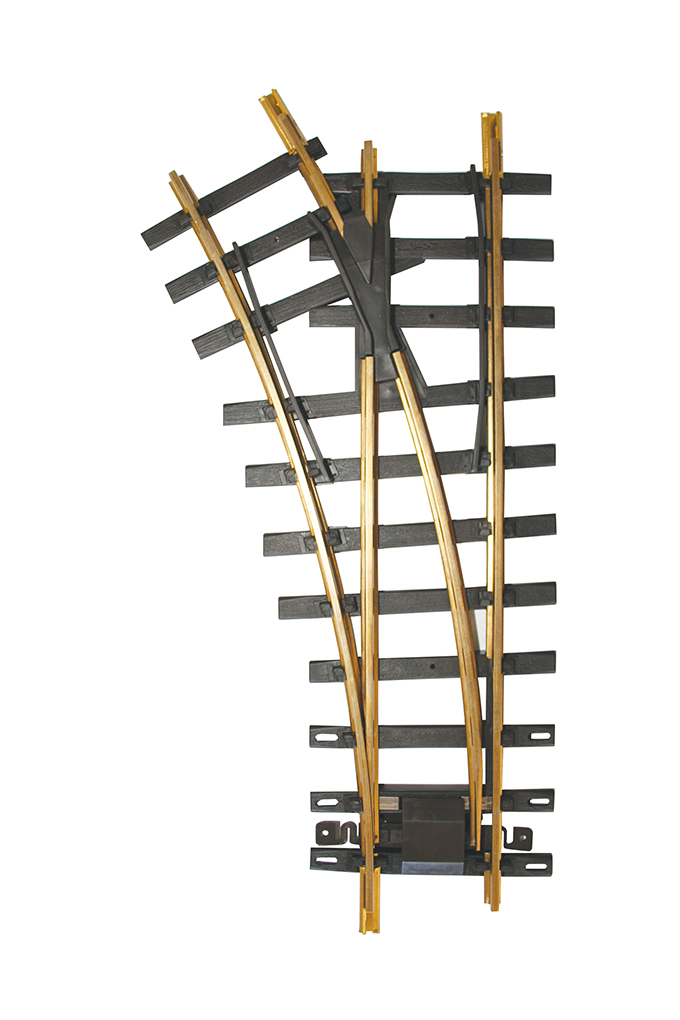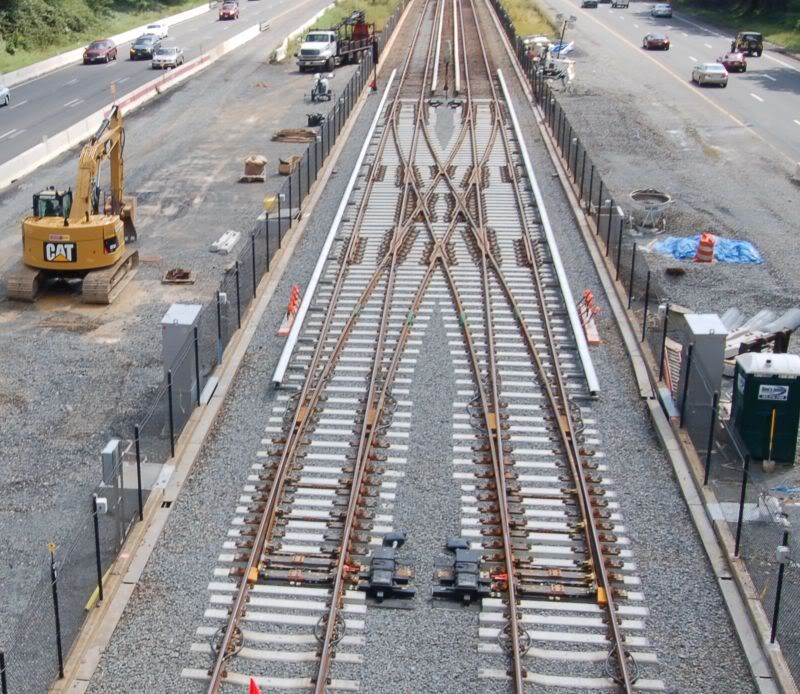Steve Featherkile said:
Devon, the only thing I can say is to reiterate what I said earlier. You can’t equate a radius with a numbered turnout. I’ll stop here, because I have a headache and I’m not making any sense.
Wel, you can, sort of. For example, I had the same questions s Devon a long time ago, so I worked out that a #6 switch is 7.5’ radus (approx) along the curved bit, then straight at the frog and curved again after that. There’s a table somewhere . .
You have to abandon the notion that the curved track of a switch is part of a sectional track circle. The prototype doesn’t work that way, and nor should we. If you really want a #6 switch to be in the circle with the straight track a diverging tangent, then use 8’ radius curves and adjust the circle for the 7.5’ curve switch+2" straight frog.
Also get hold of the Turnout Calculator on Da Trains - Rick Blanchard’s data page:
http://www.urbaneagle.com/data/index.html. That will give you a headache!
I read your description of the frog angle - be aware that it is only for calculating the angle - not the length of the frog. So a 1’ in 6’ frog (gradient of 1:6 or a #6) wouldn’t have a 6’ long frog!! The frog and point rails are only straight for as long as needed to get through the frog - then the rails curve again. In gauge 1 (or F scale) we use 1-2" of straight through the frog.
This PDF came from my drawing program (Visio) and you can print it and make a full-size #6 switch drawing by sticking the pages together. You’ll note the rails through the frog are straight, but only for a short distance.
http://gold.mylargescale.com/petethornton/Trackbits/switch-no6-visio-vsdfile.pdf
Finally, on the subject of ‘wheel hop’ and built-up frog passageways,once you’ve figured all this out, you realize that wheelsets don’t all come with the same back-to-back setting. Bachmann wheels and Accucraft wheels are different. If you want both to go through your switch, you set the check rails (opposite the frog) tight and the point rail extensions (along the sides of the frog) wide, so whatever goes through it is pulled away from the frog tip and guided through. Then you realize that Bachmann wheels will drop into a big gap like that, so you put a support in the frog gap.
The best example is the new Bachmann switch.

Note the check rails are opened a little at each end to guide the wheels tightly into the continous rail area away from the frog.
Finally - how about this for a good prototype example (Dulles Metro expansion, DC):
